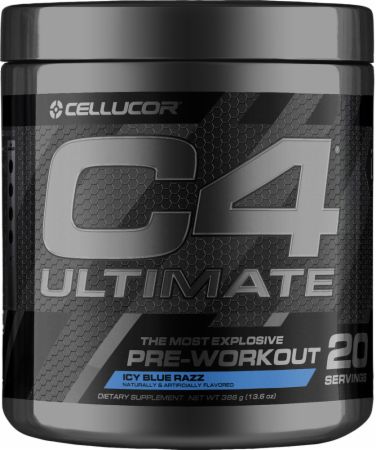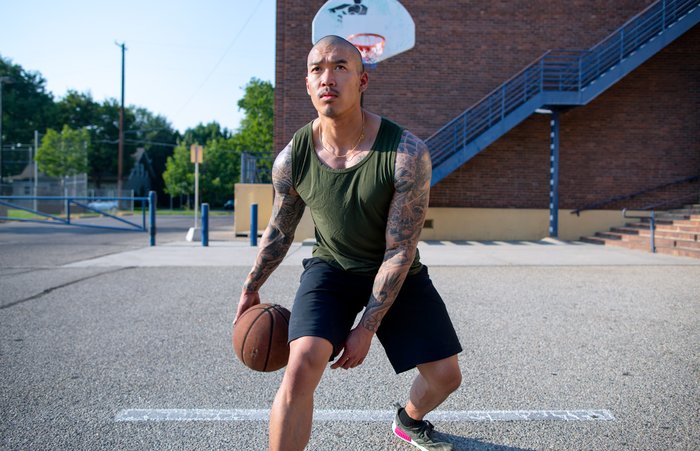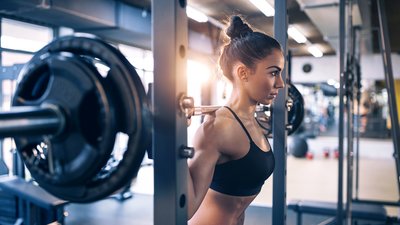One of the most common workout questions is, "How many sets and reps should I do?" The answer starts with the rep range. The rule of thumb for reps is to do 4-5 reps to get stronger, 8-12 reps to build muscle, and 15-20 reps for endurance. The more-detailed answer is that reaching your fitness goal will depend on a variety of factors, including training frequency, nutrition, fitness level, and the amount of weight used. Also key is the way you use those three rep ranges throughout the year, a concept called periodization of training.
Periodization is the logical and systematic sequence of training styles used in order to achieve peak performance at a specific point in time. Let's say your goals are to get stronger, build muscle, improve endurance, and become more athletic in general. To accomplish all of those goals, you set up a yearly workout plan in which the reps and sets change over time.
Here's how to put together your all-around athletic workout plan.
Plan Your Training Year
Divide the year into four periods: offseason, preseason, in-season, and postseason. You'll switch up your training during these times to achieve your best condition in-season, whether that means actually competing in a sport (e.g., bodybuilding, CrossFit, obstacle racing, running) or just getting in fitness model shape.

Phase 1: Off season
This phase is further divided into two periods: hypertrophy, or building muscle, and strength.
Hypertrophy, 1 month: Use 50-75 percent of your one-rep max (1RM) for 3-6 sets of 8-20 repetitions. If you're more of an endurance athlete, focus on 15-20 reps at 50-60 percent of your 1RM. Bodybuilders and strength-power athletes should aim for 8-12 reps of 65-75 percent of their 1RM. The goal here is to increase lean body mass and/or develop muscular endurance, so you can alternate between hypertrophy and endurance workouts from week to week, day to day, or even within a workout. Someone looking to get the best of both worlds would vary the weights during this phase.
Strength, 1 month: The singular goal here is to increase the strength of the muscles involved in your sport. Squats, overhead presses, deadlifts, and bench presses are great exercises to include. Use 80-95 percent of your 1RM for 2-6 sets of 2-6 reps for these compound lifts, followed by hypertrophy work in the 6-8 rep range.
Phase 2: Preseason
The preseason, which lasts 3-5 months, focuses even more on strength and power. You'll use the muscle you've built to make more strength gains while also doing plyometric exercises to work on power. You'll definitely want to include a "deload week" at the end of each month, or perhaps every eight weeks, when you do fewer reps and sets and use lighter weights. Try 85-95 percent of your 1RM for 2-5 sets of 2-5 reps in the compound barbell exercises listed above.
During the preseason, incorporate power exercises like box jumps, leaping bounds, lateral jumps, and power skips. For weighted power moves like barbell snatches, barbell power cleans, and Smith machine bench press throws, use 30-70 percent of your 1RM.
After the preseason, you should be approaching peak strength, power, and speed.

Phase 3: In-season
This competitive period lasts for months for team sports like football, basketball, and volleyball, but for a bodybuilder or powerlifter, true peaking occurs over the course of 1-2 weeks. Bodybuilders and powerlifters generally decrease the loads they lift as well as training frequency over time. For example, a powerlifter may do 1-3 reps for 1-2 weeks, varying the weight from 50-90 percent of their 1RM, depending on the day of the week and how they feel. Bodybuilders will be striking a perfect balance between enough cardio and adequate lifting to keep a pump in the weeks leading up to a physique contest. Nutrition is of upmost importance.
As for team sports, there's a maintenance approach where weights, sets, and reps are varied within workouts, between workouts, and from week to week to allow for proper recovery from games and practices. Try 75-85 percent of your 1RM for 2-4 sets of 3-6 reps.

Phase 4: Postseason
Lasting about a month, this phase is for recovering from injuries and generally taking it easy. It's the time for group fitness classes, practicing new exercises, intramural sports, vacations, and trying out new hobbies. Don't use loads greater than 90 percent of your 1RM, as you'll be lifting heavy again during the offseason. Once your month off is done, repeat the schedule, starting with the offseason.

About Frequency and Volume
Volume is the number of reps multiplied by the number of sets. Relative volume (RV) is the number of sets multiplied by the reps multiplied by the intensity. According to a 2016 study, it's relative volume, not sets or reps, that accounts for fitness results.[1] The participants trained three times per week for six weeks using either low reps or high reps, but the load varied at each workout as follows:
Low-Rep Group
- Day 1: 8 sets of 6 reps at 75% of 1RM = 36 RV
- Day 2: 9 sets of 4 reps at 80% of 1RM = 28.8 RV
- Day 3: 10 sets of 2 reps at 85% of 1RM = 17 RV
Weekly total relative volume = 81.8
High-Rep Group
- Day 1: 4 sets of 12 reps at 60% of 1RM = 28.8 RV
- Day 2: 4 sets of 10 reps at 65% of 1RM = 26.5 RV
- Day 3: 5 sets of 8 reps at 70% of 1RM = 28 RV
Weekly total relative volume = 82. 8
Both groups had similar increases in muscle size, strength, and endurance, suggesting that the volume of reps per workout doesn't matter as much as the combination of load, reps, and weight does. This is just one small study, but overall there can be a benefit to varying weight, sets, and reps at every workout to keep the body guessing.
References
- Klemp, A., et al. (2016). Volume-equated high- and low-repetition daily undulating programming strategies produce similar hypertrophy and strength adaptations. Applied Physiology, Nutrition, and Metabolism, 41(7), 699-705.

